July 22nd, 2014

Many times, wireless routers and modems are forgotten end points. While close attention is paid to securing PCs with appropriate security tools, these devices are often left unpatched and vulnerable to attacks. As Lucian Constantin reports at Computer World, owners of Cisco devices are currently in the crosshairs because of an exposed security flaw that affects nine wireless devices for both home and business use.
The vulnerability is described as “a buffer overflow that results from incorrect validation of input in HTTP requests.” This means that attackers can remotely inject and execute code on a user’s connected device, which would likely allow them to infect the device with malware. On the Common Vulnerability Scoring System (CVSS), this security flaw was given the highest score possible, a 10.0. That score denotes that successful exploits of the flaw “compromise the confidentiality, integrity and availability of the targeted device.”
The devices affected are capable of functioning as routers or wireless access points, but experts report that the devices are vulnerable regardless of which mode it’s currently operating in.
For many flaws found for routers, there are workarounds or quick fixes that temporarily fix the problem until a patch is made available, but not for this specific flaw. The only fix is to apply an update directly from Cisco.
The affected devices are:
- Cisco DPC3212 VoIP Cable Modem
- Cisco DPC3825 8×4 DOCSIS 3.0 Wireless Residential Gateway
- Cisco EPC3212 VoIP Cable Modem
- Cisco EPC3825 8×4 DOCSIS 3.0 Wireless Residential Gateway
- Cisco Model DPC3010 DOCSIS 3.0 8×4 Cable Modem
- Cisco Model DPC3925 8×4 DOCSIS 3.0 with Wireless Residential Gateway with EDVA
- Cisco Model DPQ3925 8×4 DOCSIS 3.0 Wireless Residential Gateway with EDVA
- Cisco Model EPC3010 DOCSIS 3.0 Cable Modem
- Cisco Model EPC3925 8×4 DOCSIS 3.0 with Wireless Residential Gateway with EDVA
Some of these models are distributed by service providers so you’ll want to check your device even if it was supplied by your ISP. If you’re currently using a device on this list, it’s vital that you apply a software update as soon as possible.
If you become the victim of an attack, or have any type of problem with your gadgets, call Geek Rescue at 918-369-4335.
For other solutions for your business, our parent company, JD Young, is here to help.
July 18th, 2014
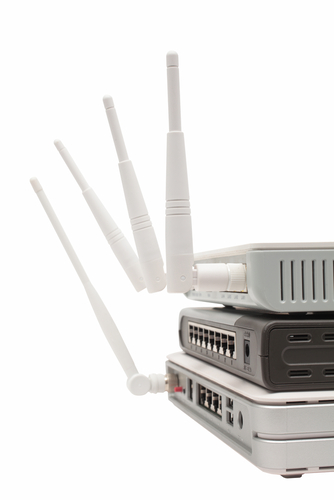
Chances are, you have a router sitting in your home or office somewhere to help create a wireless network. Do you know how best to use this router to get the best performance possible from it? There are a number of variables like how close to walls or other interfering devices the router is placed that affect performance. Even incredibly minute details can hinder performance. At LifeHacker, Melanie Pinola explains the best way to position your router’s antennae.
The majority of routers have both antenna pointed straight up. That’s understandable when you consider the way a car’s radio antenna is situated. That’s not the ideal position for your router’s antennae, however.
An Apple engineer recently spoke about how to get optimal performance from your router and included this nugget. The ideal antenna placement is perpendicular, with one pointing straight up and another pointing horizontally. The reason is that “radio reception is maximized when both client and access point have matched polarization.” Put simply, your device’s antenna and the router’s need to be on the same plane.
Some device have vertical antenna, while others have horizontal. So, to get ideal connectivity for any device, your router’s antennae should point each way.
Similarly, there’s a specific way your router should sit also. If the router has feet on it, it’s because it’s designed to sit on those feet. Putting a router on its side when it’s intended to sit flat hinders performance. This is especially important for routers with internal antennae.
If you’re having problems with your hardware, be it your router, modem or computer, call Geek Rescue at 918-369-4335.
May 15th, 2014
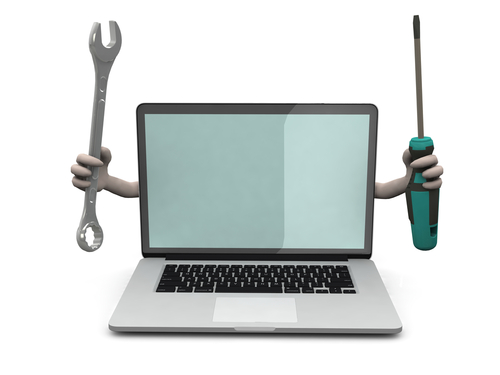
Everyone experiences computer issues from time to time. PCs have issues, as does the internet and web browsers. Some of these are complicated problems that only experts are capable of fixing. Other times, however, the problem needs only a simple solution that anyone can perform. At LifeHacker, Eric Ravenscraft compiled a list of simple fixes for the next time your computer is acting up.
It’s cliched but restarting your computer really does solve a lot of problems. When your computer freezes or is being sluggish, sometimes the best solution is to restart. It’s also helpful to discover whether you’ve encountered a recurring issue or a one time thing. If you restart and the same application causes the same problem, you know more going forward.
It’s also a good idea to close applications you aren’t currently using. Having too many programs open at once could be too much for your machine and cause it to run slowly or even crash. Your PC only has so much RAM and when you’ve used most of it, problems arise. Closing applications also helps you narrow down where the problem is actually coming from.
If your hard drive is close to full, that causes more problems. Ideally, you’ll go through and delete old files and applications before there are signs of trouble, but if you haven’t, do so when you’re having issues to potentially fix the problem.
Just like restarting your PC is a good first step, unplugging your router should be your first step to fixing internet issues. Be sure you keep it unplugged for at least 10 seconds to completely restart it. Many times, when you plug it back in your internet connection will be back to normal.
A speed test is another great option if you are connected but things are running slower than usual. If your getting the right amount of speed according to the test, the problem is likely a bandwidth hog, which is either someone else using your network or having too many downloads currently running.
So, the logical next step is to pause or cancel downloads to see if that fixes your internet speed. If it doesn’t, it’s probably time to contact your service provider.
You guessed it. The first step is to close the browser and restart it. This actually fixes the problem more often than not. If you’re having trouble with a particular website loading, there are services available that will tell you if the website is down, or if the problem is on your end.
Extensions can also cause plenty of issues. If your browser is acting up, disable your extensions to see if that fixes things. You can even disable them one at a time to narrow down the root of the problem. Using a private, or incognito, mode is also helpful to determine if extensions or cookies is the cause of the issues.
Finally, clear your cache and cookies as a final effort to fixing browser problems. Tech support will suggest this first, so you might as well get it out of the way before you call in the experts.
If these simple fixes aren’t enough to fix your computer’s issues, call Geek Rescue at 918-369-4335.
May 9th, 2014
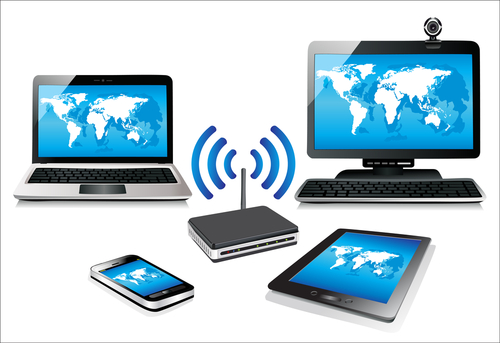
Most homes and offices use wireless routers, but that means they’re also susceptible to hacks and attacks. Routers are notorious for their many security flaws so it’s important to take a few extra precautions in order to stay safe. For some of the basics of securing a router, check out this post from February. At LifeHacker, Melanie Pinola published a list of some more advanced ways of improving your router’s security.
This feature is included on every router, but it isn’t always turned off by default. Remote Administration allows a user to access the router’s control panel from anywhere, which means you don’t have to be currently connected to your network in order to change settings. There might be some situations where this would be helpful, but mostly it is an opportunity for hackers to wreak havoc. Check your router’s settings for a Remote Administration, Remote Management or Enable Web Access from WAN option and make sure you turn it off.
More commonly referred to as UPnP, Universal Plug and Play refers to a feature that makes it easy for your router to recognize internet ready devices. While this should make connectivity easier and more streamlined, it also introduces a number of security issues. Namely, with UPnP your router doesn’t include any type of authentication and considers every device trustworthy. Turn it off in the router’s settings, usually under an Admin section.
Keeping the manufacture’s firmware on your router updated is important, but for advanced users, finding trustworthy open source firmware is an even better option. DD-WRT is a trusted source and offers much more secure firmware than what’s included with your router. There are also more frequent updates to fix any problems that pop up. If you decide to install alternative firmware on your router, however, be sure to do your homework first.
These tips, in addition to more basic security tips like changing your router’s password, keep your network safer from attacks.
For help creating a secure wireless network for home or business, call Geek Rescue at 918-369-4335.
April 24th, 2014
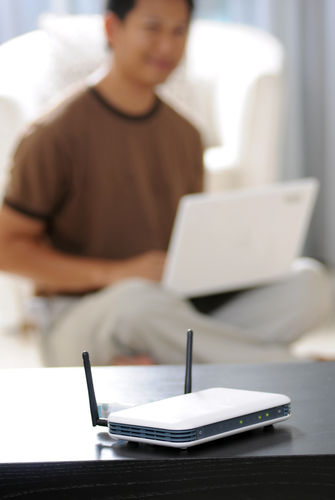
Wireless networks are everywhere and are responsible for keeping our most used devices, like PCs, smartphones and tablets, connected to the internet. They’re far from perfect, however. A WiFi network is generally slower and less stable than hardwired connections to your modem. But, as noted in a video recently posted by Techquickie to YouTube, there are a few ways to improve your wireless network. Some of these tips require the purchase of additional hardware, but here are the absolutely free ways to improve your network.
- Find the right spot for your router
Surprisingly, making your network reach the entirety of your home or office could be as easy as moving your router. There are a number of factors that contribute to limitations to the size of your router’s range. First, understand that the coverage area is sphere-shaped. Placing your router close the center of your home will give you a better chance of covering all of it. Putting a router on the floor, or next to thick walls and thick objects, particularly those made of stone, metal or concrete, greatly reduces the coverage area so try to avoid those while finding an ideal spot.
Software and firmware updates are vital to patch security vulnerabilities, but can also be helpful in improving your router’s coverage area. To check for the latest updates, just go to the manufacturer’s website. For example, the Linksys website has a ‘Support’ section with updates for all of their products.
Regardless of your router’s manufacturer, you should be able to switch between channels. If you’re using a 2.4 GHz band router, you’ll want to use channel 1, 6 or 11 because these are the only usable, non-overlapping channels. Deciding between these three depends on the other routers in use in the area. For example, if you have neighbors on each side and one uses channel 1 and the other uses channel 11, you’ll want to use channel 6. Unfortunately, it doesn’t always work out so cleanly. In addition to other networks, things like baby monitors and cordless phones contribute to interference. You can either use trial and error to find the best network for your area, or look for available tools and mobile apps that show you the other networks in use.
If these tips don’t work, you’ll probably need to add or upgrade hardware in order to improve your network. A new 5 GHz router, if your devices are compatible, will greatly improve your connection speeds. Other options include adding a new antenna or repeater.
If you’re having trouble with your network and need to fix your router, modem or other hardware, call Geek Rescue at 918-369-4335.
April 9th, 2014
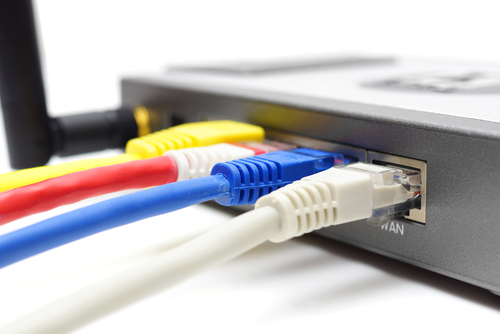
Recently, you may have noticed the scores of headlines reporting attacks on wireless routers. Major brands like Linksys and Asus have been plagued by attacks and experts are speculating that attacks on these devices are becoming a trend. Lucian Constantin at ComputerWorld reports on the details of why wireless routers have become such a popular target of cyber attacks.
The most obvious target of attacks is your computer. It contains a wealth of information that could be valuable for criminals to steal and processing power that attackers can harness. Because computers were being targeted by such a large volume of attacks, security began to improve. Not just in the form of antivirus programs, but even in the way operating systems and other applications were built and updated. Suddenly, it was much more difficult to attack a computer directly.
While hackers began developing more intelligent threats, most attacks will target the path of least resistance. That is no longer a user’s computer. Now, that’s a user’s router.
Wireless routers haven’t been the target of many attacks in the past, so manufacturers and users have not made security a priority. This has made attacking them now relatively easy. In fact, security flaws that haven’t been available to attackers for more than a decade are often still open on wireless routers.
In addition to the relative ease of access, attacking wireless routers allows criminals to access every device connected to them. Now, instead of using a targeted attack to infect one computer, a single attack targeting a router can infect every device in the home, which could include laptops, smartphones, tablets and even TVs, DVRs and other internet ready appliances.
Adding to the problem is the fact that routers aren’t updated automatically, which leads to many of them being extremely outdated from a security standpoint. They aren’t being made securely in the first place, but when a vulnerability becomes public, the patches and updates that are released aren’t being widely implemented. This is true of most applications that require users to actively search out an update and manually install it. In the case of routers, it requires some technical expertise to change settings and update. Many users fail to even change their router’s name and password from the factory default.
The first things for users to understand is that their router is vulnerable. It does need to be updated periodically and needs to have a strong password associated with it. For those who are capable, it’s a good idea your router’s admin interface unavailable from the internet.
Creating an effective security infrastructure requires securing a number of potential attack points. For help improving security for your home or business, or for help recovering from an attack or malware infection, call Geek Rescue at 918-369-4335.
April 7th, 2014

Wireless networks have come a long way in the past decade. While you enjoy speeds faster than ever and enhanced security, there’s still an ever-present threat of someone stealing WiFi. More devices connected to your network means slower connection speeds and more bandwidth being used. Andy O’Donnell of About recently explained how to tell if someone is freeloading on your wireless network.
- Check Your Router’s Admin Interface
Every router has a way to log-in and change settings. If you’re not sure how to do this, check the user guide or search for information online. Once you’ve logged in, look for a ‘wireless configuration’ page or ‘wireless status’ page. Here you’ll find a list of the devices connected to your network. In one column, you’ll see the MAC address, which can be used to determine what type of device is being used. In the next column, you’ll see the IP address. These two numbers help you tell the trusted users from the freeloaders.
Take a moment to think about every device in your home that should be connected to your network. That’s every smartphone, laptop, tablet and desktop that’s using the internet. Remember that even a video game console and some cameras might be using WiFi. Now, compare that number to the number of devices listed in the router’s admin interface. If they don’t match up, then you’ve got someone else connected that shouldn’t be. This is where the MAC addresses will come in handy. By using a MAC Vendor look-up site, you’ll be able to determine the manufacturer of each device on your network. If there’s a device found that you don’t own, you can be certain that a stranger is using your internet connection.
Having unwanted guests on your wireless network is a sign that your security isn’t tight enough. To remedy this situation, start by enabling WPA2 encryption. Then, change the network’s name and the password required to log-in. Don’t use commonly known words like the names of children or pets. Treat your WiFi password like your bank’s website password. Don’t use full words and mix in numbers and symbols.
Properly securing your wireless network not only helps keep unwanted devices from connecting to it, it also ensures that data you send through your router isn’t monitored or stolen.
For help improving the security of your home network or the one at your office, call Geek Rescue at 918-369-4335.
February 26th, 2014

It’s common knowledge that computers need to be protected with antivirus programs and other security tools to keep from being infected with malware and attacked by other means. Very little attention is given to protecting a router, however. Wireless routers have become common. A decade ago, many homes used wired connections to the internet, but with the rise of mobile devices came the rise in demand for wireless internet. The more devices are connected to a router, however, the more valuable a target it is for attackers. As many as 70-percent of these routers contain vulnerabilities and suffer from a lack of security. These factors explain why attacks on routers have been steadily increasing over the past year.
So, what’s at stake if your router is attacked? A compromised router allows a third party inside your firewall. From there, they’re able to monitor all activity and data being sent through the router. Emails, log-in credentials, credit card information and more is available to be intercepted and monitored. Steve Bell at the BullGuard blog published a few ways to improve your router’s security.
Just as it’s important to keep your computer’s operating system and antivirus program updated, it’s important to regularly check for router updates as well. Updates to the firmware may not be automatically pushed to your router, even if the update is able to eliminate a serious security vulnerability. That’s why it’s vital that you regularly check with the manufacturer’s website to see if any recent updates have been created.
The lack of security for most users browsers comes from a simple lack of knowledge of the device’s capabilities. Many routers come with an option to encrypt data, but it may not be turned on by default. Be sure to read through your router’s manual or browse through the settings to find useful security tools.
A quick look through settings can not only allow you to enable more robust security on your router, but it also can help you avoid attacks. The first change you need to make after setting up your router is to choose a new name, which is also called a service set identifier, or SSID. You’ll also want to change the password. Routers are sent out with default names and passwords. Attackers know these typical passwords because manufacturers use the same ones over and over. Changing them immediately improves security.
Router attacks are difficult for typical users to detect. That opens the possibility that a criminal could be monitoring your activity through a compromised router for months. To avoid that, you’ll want to take the necessary security precautions.
If you’d like help setting up a secure wireless network, or have been the victim of an attack, call Geek Rescue at 918-369-0745.
February 19th, 2014
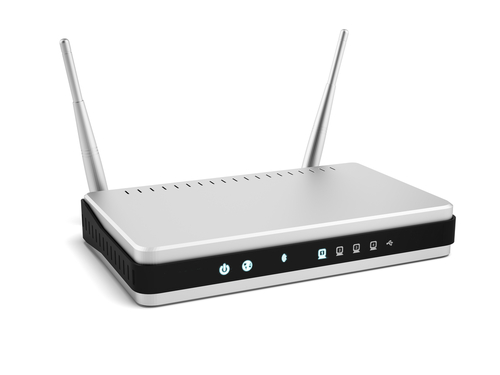
Over the past few months, wireless routers have become more of a target for attacks and more vulnerabilities have surfaced. Attacks on routers can be extremely costly as hackers could gain access to any data you are sending out or receiving and could even gain access to information stored on your hard drive. Seth Rosenblatt of CNet reports that vulnerabilities in Asus routers have put those users particularly at risk.
There are nearly a dozen Asus routers vulnerable to active attacks. Hackers are able to exploit this vulnerability to gain access to access data stored on networked drives. If you’re using the cloud storage options included with Asus routers, there’s a good chance that criminals could gain access to anything stored there.
The vulnerability was first discovered more than six-months ago, but Asus has been silent about a fix. Now, after evidence of attackers exploiting the security flaw have surfaced, Asus has released a firmware update fix. There’s still one problem, however. The update isn’t being automatically sent to all affected browsers. Instead, users have to visit the Asus site themselves and manually install the fix.
Since Asus hasn’t done a good job publicizing the availability of this update, many users are still vulnerable to attacks.
Experts are speaking out about the improvements needed from manufacturers in order to keep routers safe from attacks. Because there is so much to gain by launching an attack against a router, companies need to do a better job making security a priority and getting their products patched before hackers have a chance to exploit vulnerabilities.
If you’re router has been attacked or your computer has been infected with malware, call Geek Rescue at 918-369-4335.
November 26th, 2013
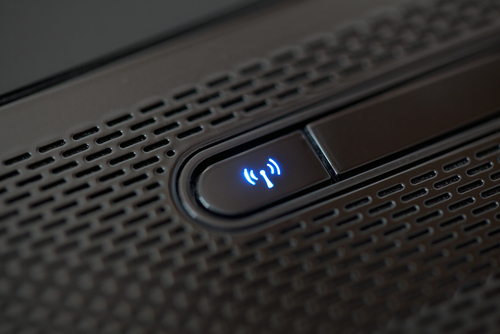
Wireless internet can be finicky. You may get a strong signal in parts of your house, but a weak signal in some rooms. You may also notice your connection seems to get slower over time, or you experience disconnects frequently. As Steven Scheck writes for Business2Community, there are fixes to these common WiFi problems. Here are some ways to improve your wireless internet experience.
There’s not much expertise needed to optimize your wireless internet connection, but some basic knowledge is helpful. For example, your router uses a channel, similar to a radio signal, to broadcast. If you are using the same channel as another router close by, it could cause interference. If you’re experience problems with your WiFi, such as a slow connection, try changing the channel in the router’s settings. Also, if you’re using a ‘g’ or ‘b’ router, it’s time to upgrade. These are typically older models with limited capabilities. Instead, upgrade to a ‘N’ router and you will see dramatically improved performance, such as a larger range and more reliable connection.
The physical location of your router has a significant impact on the quality of your connection. Each router has a limited range, so the closer you are to the router, the more likely you are to enjoy a strong connection. So, place the router in a central location in your home. Also, try to keep it away from devices that would cause interference, such as other routers, or even microwaves. Keep in mind when placing your router that signals are weakened when they pass through furniture and walls.
If you’re out of options and your wireless network still doesn’t provide a strong connection throughout your home, it’s time for WiFi Repeater. By placing Repeater in range of your router, you’ll enjoy a stronger signal from farther from your router’s physical location. The range of your router will be up to twice as large.
Being able to connect to the internet isn’t the only mark of a successful wireless network. Be sure you have the proper security in place. To do so, make sure you’ve changed the log-in information from the factory settings. Turn on encryption and MAC address filtering. Change the default SSID and disable SSID broadcasts. It’s also important to put a firewall in place for your router and PC.
These tips help you create a quality wireless network in your home. For help with your network, to improve security, or to fix broken or malfunctioning hardware, call Geek Rescue at 918-369-4335.


















